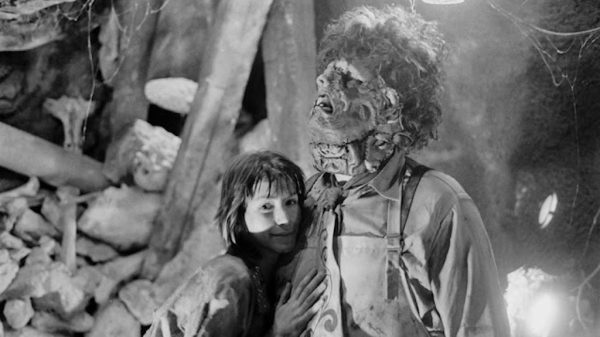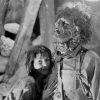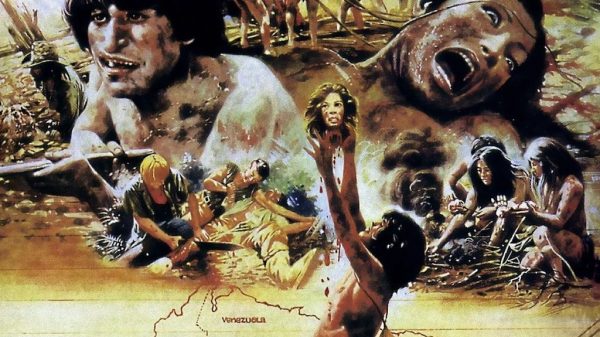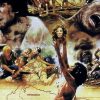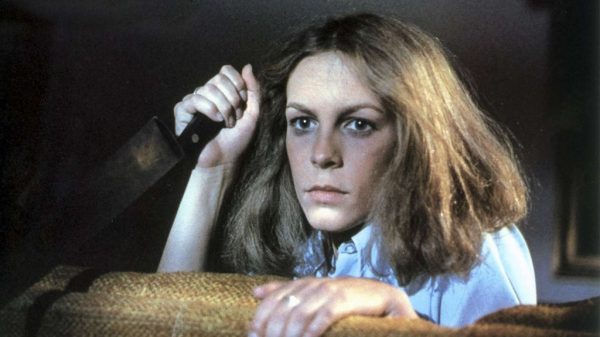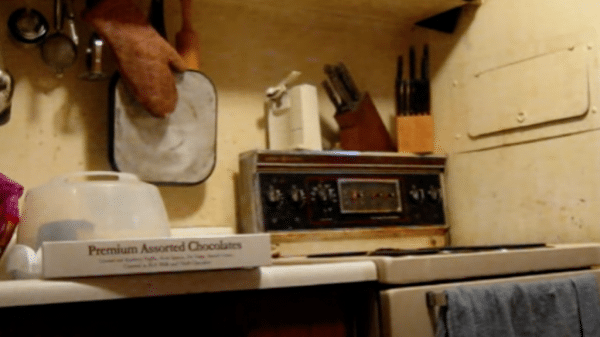Every artist – be they a painter, musician, writer or sculptor – has a moment where the creative spark is ignited. A place in time that will always be marked as a turning point for them in regards to delving into their passion. For you, at what point in time did you start to really feel the driving need to explore your artistic nature? In addition to that, was there anyone in particular, be it family, friends or other artists, that inspired you?
Chris Andres: I believe the spark of inspiration happened when I was three years old. I had asked my grandmother to sew magenta yarn into the scalp of my knockoff Tigger doll. I wanted to experience long pretty hair rather than cope with the ordinary plush. I believe I knew then that reality could be bent through the toy’s gender to match my desire. As a kid, I quickly learned that what I desired and what I was attracted to would be categorized by family and strangers as “wrong.” Understanding my nature as an artist coincided with my understanding of myself and my nascent sexuality. Those “wrong” desires and attractions would eventually become the spirit of how I would make art, and how I would understand the personal nature of art.
As a young boy, I idolized almost any 80’s girl toy line – mermaids, fairies, unicorns, and all things She-ra were my particular favorites. “You’re not a girl!” was a common phrase I’d hear, and I’d often feel the shame that came with it. I learned I could get away with obsessing over Greek myths. When I wasn’t drawing Lady Lovely Locks Enchanted Island character Maiden Golden Waves, I would draw all sorts of mythical creatures and gods. I’d see a book illustration or a doll, then I’d promptly make a graven image of it. If poverty, availability, or gender roles prevented me from possessing the object of my fantasy, I would make it. I’d steal away a plastic grocery bag, tie it into knots to form heads, limbs, wings, or tails. I loved to make mermaids with long wispy fins and play with them in any pool or tub I could escape to.
My artistic expression and my self expression were slowly evolving into what they’d eventually become. However, I was struggling to reconcile my evangelical upbringing with my true queer self – my artist self.
In undergrad, I studied music – as a child, I loved Disney’s Fantasia – I obsessed over classical music made into cathartic wholeness with beautiful images and dazzling creatures. For Halloween concerts, my college ensemble would perform, and I would adorn myself in Julie Taymor-inspired operatic costumes and gender-fucking makeup I created that screamed closeted religious repression and diabolical inclinations. Art was forcing itself out of me and I could not hide from it anymore.
It was my bassoon coach who sensed that I was uncomfortable in my own skin and within my burgeoning classical music profession. She recommended I watch Akira Kurosowa’s Dreams and take some art classes – she was bold enough to tell me being a musician was not in my cards. I could smell my father’s vicarious dream of concert hall applause decaying.
I took her advice and never looked back.
With some strange serendipity involved, I gravitated into photography. I saw images as frozen arias powerfully entwined with human identity and inferiority. It was discovering Joel-Peter Witkin and Pierre et Gilles that unified my aesthetic desires, sexual fetishization, and my sense of wholeness. Following the well-trod path of gay-gothy angst, I shifted my Pentecostal Christianity studies into Gnostic and esoteric realms, then eventually into Satanically-fueled atheism.
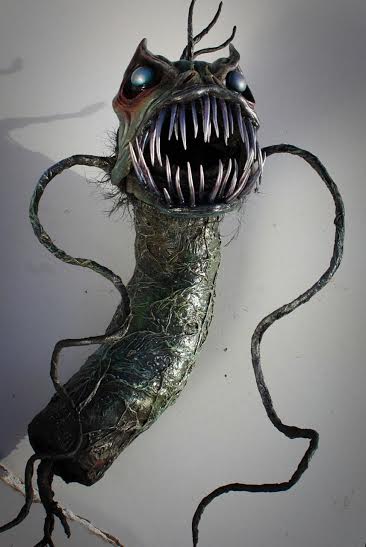
It’s interesting that you were brought up – or mentioned – an Evangelical upbringing. The doctrine and practices of the ‘Church’ have seemed to repel and repulse a number of artists over the years. What was it about this moral and religious doctrine that appalled you and forced you to seek out the darker side of the universe?
Chris: It is that you have to mutilate your humanity to conform to religion. It took me a while to figure this out, and it’s what finally made me wash my hands of Christianity. It was a gradual departure. I was heavily involved in the ministry. My small universe was a zealotry of 4-7 days a week throughout my senior year of high school within a “cross and the switchblade” straight from the barrio Pentecostalism.
There were seeds of apostasy; strangely, my mother instilled in me a workable feminism that continuously began resist the patriarchy inherent within Christianity. The irritation to male chauvinism quickly became an allergy to the soon-to-come homophobia. This was a time before the neoconservative paranoia became as fervent as it is today. Technically, I was a creationist, but I knew evolution and natural selection be a godly action. The universe was 13.7 billion years old and somehow it made sense to the six days of Genesis. I’m think many Christians are like I was – having their eternal life and eating the secular materialism cake too; serving two masters. Above all this, it became clearer that if I was to continue to be a part of the great flock, I was to mutilate a part of myself – I would have to hate myself. Just like I, many “men” cut off parts of their internality to pass as an emotionally mutilated man. Internalized self-hatred is at the heart of the pathology of queer children – or any who want to be fully human – growing up in a conservative environment. If this not an issue for some, they are asleep. I believe it is perverse to bypass your mortality into an eternal life, just as it is equally perverse to believe your nature to be sinful. It is also ignorant.
The religious sheep need the sweet seductive simplicity of certainty. It is not about human drive to find transcendence, it about having answers and absolutes in a human experience that has no absolutes. There is no certainty in nature; it is a superstition.

You mentioned a passion from an early age for drawing images of gods and monsters from various myths, and one can see these influences a great deal in some of your works – The Satyr, for example. What was it about these age-old stories that captured your mind and interest? More so, was there certain region or eras myths that you gravitated towards?
Chris: I’m a Greek-Mexican. There was a strange cultural tension growing up. My father’s Greekness seemed to overshadow my mother’s Latino pride – at least it felt like that. Like a lot of Latino kids, I wasn’t taught Spanish – or Greek for that matter. What a lost advantage I could have had. Greek myths seemed to be the material to connect with my melancholic father – but he was lost in the Christian smog just like I was. The evangelical period of my family created repression and division; the religion only works for the unexamined.
My favorite book as a kid was D’Aulaires’ Book of Greek Myths. I could not read well, nor did I care to, so I absorbed illustrations from wonderful books featuring enchanted worlds and fantastic people. Another huge inspiration was Scary Stories to Tell in the Dark. The 80’s were fat with fantasy. While visiting Greece during this time – I was seven – I was struck by all the beautiful Hellenistic nudes and marble dicks that seemed to dangle in the blushing faces of my parents’ contrived Regan-loving conservatism. And there was porn everywhere!
My dad was one those rare Greeks that was a legit classicist. He knew ancient Greek, read Plato, and knew the Olympic pantheon. Gradually, I absorbed the myths, despite my dad’s reciprocity, loving the origin stories, the godly personalities and powers, and the human/animal hybrids – much like a Marvel or DC fan.
I’m a huge nerd for myths, and now that I understand them as such, the Christian ones, too. I owe my salvation to Pan. Pan, or the satyr, has an awesome syncretism with Satan. All things sexual and lusty brewed with Dionysian ecstasy have been mutated into the Satanic, from the coven-hooved-masturbation loving Nature god. In 80’s Athens, Pan’s image conflated with Priprasmus was everywhere – on t-shirts, coasters and really cool key chains. I don’t know how my parents could face all those grimacing satyrs gripping their huge un-Puritanical cocks. As a kid, I’d pretend to be satyr both in playtime and in “playtime” – like Mr. Tumnis, I guess, a pagan creature thrust into a Christian allegory. And it gets gayer than that. In sixth grade, for the sporty and academic Greek and Roman day, I had my mom make me some furry shorts with a tail with attached stockings which I completed with electrical tape hooves and wire horns. I was the only one to take the towel/bed sheet toga dress code to the level of faggy theatrics. I could have been embarrassed, but I was going to prove to the entire sixth grade class that I was the “Grexican” who owned this shit.
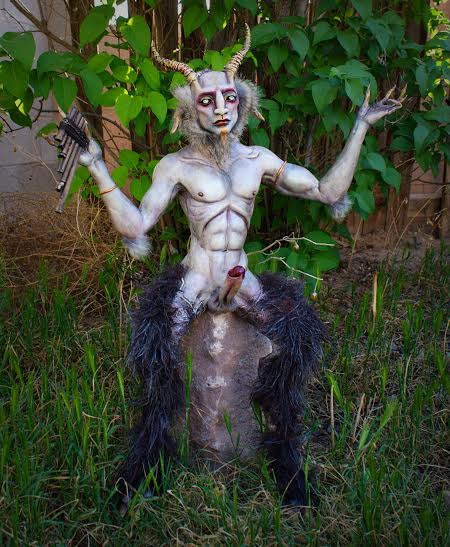
It’s a safe bet on my part to guess that you’re a Horror movie kind of guy. Were there any films during your early years that helped shaped your vision or that really stuck with you?
Chris: Yes! Horror has been ever-present in my life, even amidst Yahweh’s stranglehold on my creativity and my libido. The film that captivated me and gave me a respite from the oppressive light of God was Clive Barker’s Nightbreed. Saturated with esoteric mysteries, Nightbreed pulled me into Midian and into the comfort of moonlight. I remember so vividly on the oft-viewed VHS tape of Barker announcing, “Plunge into a world…where monsters are beautiful.” Later, Hellrasier would carve its way into my hell-bound heart after some melodramatic wrestling with parents, pastors, and Jesus Christ.
Barker. Jesus. That man really just went straight down a dark hole with all his works. Cabal, The Damnation Game, Books of Blood, Weaveworld and Imajica. Pretty much anything he’s done has straddled this line between really intense horror and unknown, almost tangible, touchable worlds. As an artist – someone like you that creates with their hands – what was it about Barker that really resonated within the Horror community and even more so, popular culture?
Chris: Barker’s work shows the angst of the human condition intensified with horror. There is such a profusion of unexamined personal and collective psychologies – an artist like Barker unleashes the shadows that are overwhelmingly repressed. Shadows like this carnality of our bodies and the perplexing relationships between death, creation, pleasure and suffering. “We are books or blood; open us up and we are read.”
I think Barker’s work attracts those to find the mask of the societal persona uncomfortable. Sunlight, capitalist strivings and obligations, oppressive traditions, corrupted connections to one another, and lack of transcendence are the materials that form that mask. So much of my characters in my work are wearing masks or someone else’s face – masochistically delighting in there perverse minstrelsy – dutifully appropriated from Thomas Harris and Barker. The shock of horror is the agony of awakening. The shock comes from the mask of skin after it’s been pulled away, and the darkness stings and stimulates the rawness underneath it all. Barker’s work reminds us we are divine and base – that we are all gods – gods with anuses.
In Barker’s pantheon, there is a collision between the elements that so many of us within our western social conditioning strive to keep differentiated. Solve et Coagula. Horror undifferentiates, dissolves the twoness into oneness.
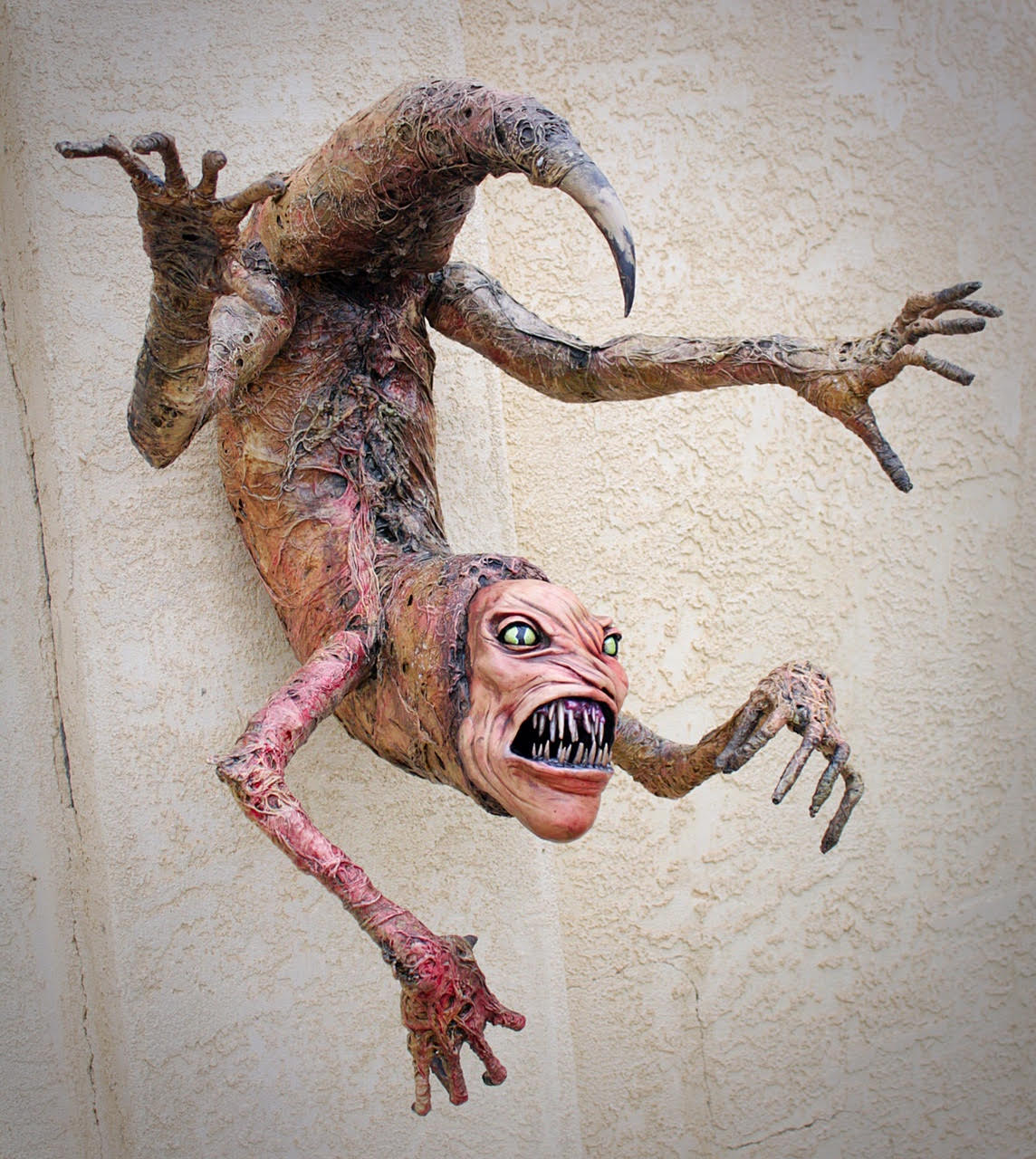
While you can definitely see the influence of Barker’s artwork and vision in some of your sculptures – specifically the Neolithic Mermaid doll and Goth Witch – one of your biggest frames of reference seems to come from H.P. Lovecraft. From an artist’s standpoint, what made his works and mythology so inspiring in terms of creating a piece of work?
Chris: There is something violating about the sea; its creatures so monstrous and alien with their gaping hell mouths as they float in blackness. Lovecraft articulated the abyss as the cold indifference of existence. In his collaborative mythos, there is no heaven above or benevolent god to dry our tears or evaporate our sinful wetness – just the grim tragedy of consciousness. The rain falls on the righteous and unrighteous alike, and will continue to fall long after we rot. Artists of all sorts are drawn to Lovecraft’s torment because it expresses this terror so well.
I like to imagine Lovecraft reluctantly touring the immigrant fish market in New York or Boston, scowling and clutching his lily-white collar as his festering racist xenophobia is exacerbated by the ghoulish sights and smells of the un-Victorian, un-puritanical foreign seafood and its vendors. Perhaps the shock of suffering through the gutted fish bodies and deflated cephalopods crossed wires with his fear of the dark-skinned other, hellbent on debasing and extinguishing his delusional hygienic fantasy of humanity.
The link between cosmic terror and terror of the other is one of those fascinating shadows we struggle with. We die alone; we are forever trapped in a prison of interiority, only briefly experiencing relief in clearing moments of authentic intimacy. We demonize the other to create self-delusional closure in our crisis of our own otherness. Lovecraft’s work expressed that we are all queer to everyone else – that our small worlds are an experience of an isolated perception, only to succumb to to the conquer worm, a single fish on borrowed time, ever swimming in blackness as a leviathan coils beneath. That and his sinful word ‘masturbation’ has made me blind to concision.
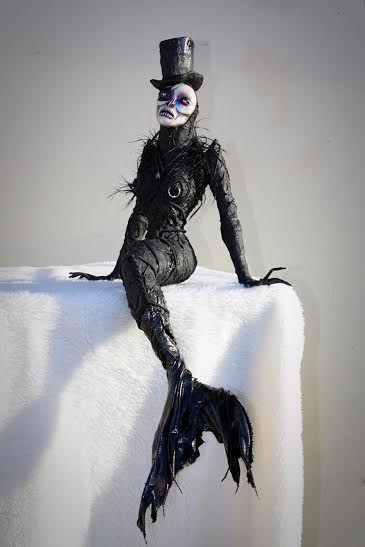
It seems that Hollywood has primarily been churning out garbage remakes over the last decade and half in regards to Horror. They seem to think that the market here doesn’t want anything new or interesting presented to them. Care to weigh in on that? Also, with you being a Horror-fanatic, has there been anything released or a director that you feel has really started to push the envelope?
Chris: You’re so right about horror remakes. Most of them are contrived and desperate grabs to cash in on safe bets. If the Hollywood of now were a person, it would be the asshole who never took risks only to die content with mediocrity, but exquisitely un-inspired and un-moving. It might be corny, but: No risk No reward; Know risk Know reward. We’ll never get another “Let Jesus fuck you! Let Jesus fuck you!” again. But there are some rays in the darkness.
Horror fans know how personal their fandom can be. Shit for some might be cupcakes for others. I like my horror like I like my serial killer: extreme and artful. Give me Blair Witch less-is-more or a surrealist bukkai. Also, I arrive late to many cultural phenomena – something that came out years ago hits me and I rave to a bored audience of hipper, up-to-speed and sexier aficionados.
I don’t think it’s officially horror, but I’m looking forward to Nicolas Winding Refn’s Neon Demon (2016); I loved Bronson (2009), which brings to mind Beyond the Black Rainbow (2010) directed by Panos Cosmatos –the stylization shines in innovation creating a psychedelic, Tubular Bells psychosexual Scanners-esque eye/ear candy binge.
There are some horror films that stand out for me as well as moved me. Excision (2012), directed by Richard Bates Jr. The protagonist/antagonist Pauline reflected the millennial self-aggrandizement, but was deliciously glamorized by surrealist necrophiliac psychopathy that spoke to the taboos and boundaries that keep us from our self-actualization, although the film’s gut-wrenching climax ironically endorses our cultural fear of dreamt desire. I totally ripped off those sexy teal morgue tiles featured in the dream sequences, seen in some of my images.
Begotten (1990), directed by E. Elias Merhige, seizes me. The opening scene of God disemboweling Himself is perfection for me. The entire film feels like a ritual that I’m supposed to be performing once I finally achieve that self-actualization I keep yipping about. The film feels like a dream – one of those deeply emotional dreams that cling to you after you awaken, those dreams that are both terrifying and tender, like cumming while grieving.
The surrealism in the Tv show Hannibal totally gets me wet. I adore Michael Dougherty’s Trick ‘r Treat (2007).
I love the tantalizing tickles of spooky shit – shadowy figures, moonlit graves, midnight forests – that’s my comfort zone; I feel safe, nostalgic. The only horror that “scares” me is the ontological violation. That’s a pretentious way of saying inter-dimensional uncanniness – vastly superior intelligences that in their cosmological status seem malevolent. Lovecraftian, but without the Baroque, goofy marine biology. I think most horror fans have their fear personality profile rooted in a childhood horror film trauma that feels so real when we were kids, causing delight or horrific curiosity that still creeps about our adulthood. For me, it was the 1989 film Communion – the beings in the film were not buffeted with schlocky Ufo-isms, rather they were unholy gods with eyes as cold and empty, but omnipresent, as space. There are parts of The Forth Kind (2009) that actually gave me chills recalling Communion and childhood terror. The Mothman Prophesies (2002) had Ingrid Cold speaking in a voice borrowed from the cosmic background radiation. It Follows (2014) had a tall man that was typical of nightmares I was having before I watched it.
But hands down, the resent horror film that really gets my juices flowing is Robert Egger’s The Witch (2015). It does not have any cosmic horror or anything that I personally consider horrible, aside from the hellish faith of repression inherited stealthily into the United States’ genes.
While watching it, I was nervous that the film would veer off into Hollywood-ism or become a trope-heavy tome designed make the straights sweat a little, but which ultimately unimpressed the left-handed path sojourner. It had tropes, but they were directly towards the deliciously satisfying thesis of the film – freedom from castration-driven patriarchy, freedom from the overwrought sanctity of institutional childhood innocence, freedom from the hypocritical irreligious piety of the fear-ridden, and freedom from a tyrannical dying God crowned in diadems that sparkle with a hatred for human nature. But most of all, the film hailed Satan as the savior of an enslaved humanity – the character of Satan being Frankenstein-ed from ancient scripts to become the penultimate symbol of the rebellious human spirit warring against control, authoritarianism, and oppression.
When you sign the Devil’s Book, are you simply trading one bullshit symbolic philosophy for another? Perhaps – however, humans are creatures of symbols. For most animals, they have a one-to-one relationship to nature. For them, X=X. Nature went further with humans. Our minds, that is to say our consciousness, what we know ourselves to be, is engineered by metaphors, signs, and symbols – for human animals, X=Y.
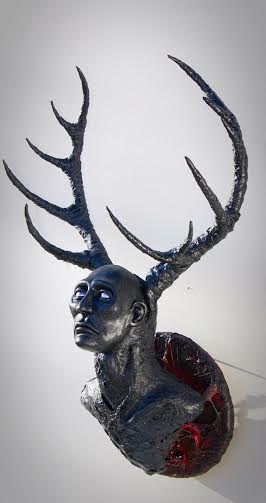
While this next question might be a bit vague in terms of content, I’ll leave it to you fill in the gaps and run with it. As an artist, what does the process of creating something mean to you? From start to finish, what is the spiritual fulfillment that comes with it?
Chris: When I make a mermaid, Cthulhu head, or Baphomet, I have made an idol – a ritual object for the fetish of fantasy, whether they are nostalgia-driven Halloween kitsch or ironically solid altar statues, it’s all motivated by the same spirit. My 80’s girl-toy collection are like little saints and deities within a religion of self-actualization created through the imaginative projection – a bodhisattiva Astro Boy. Photographs are frozen memories; they are more remarkable and powerful when crafted with poetry – so too are objects and idols that reflect our conditions of being. I see no difference between a decked-out Monster High doll beloved by a grownup and a gorgeously Baroque wooded Saint revered by the pious. They hold a magical reality for us; there is something inherent about humankind’s desire to manifest the gods of our imagination into the material world. I have an intolerable impatience to release those gods and monsters from thought into form.
When I have taught art history, I’d show a slide of the Makapansgat Pebble – a tiny rock dated around 3,000,000 years old that is associated with our predecessors Australopithecus africanus. The pebble activates the uncanny gestalt known to all humans – it has a face, or faces. It is believed by anthropologists to be a cultural artifact of the early hominids. It has a whole 2001: A Space Odyssey aura about it. Through hominid neurological evolution, imagination, the meaningless rock came to have meaning. A rock became a face; the X became Y. I like to imagine our ancient ancestors also would have gazed at the moon and began to wonder if that was a great face shining its light back into eyes newly transformed by imagination.
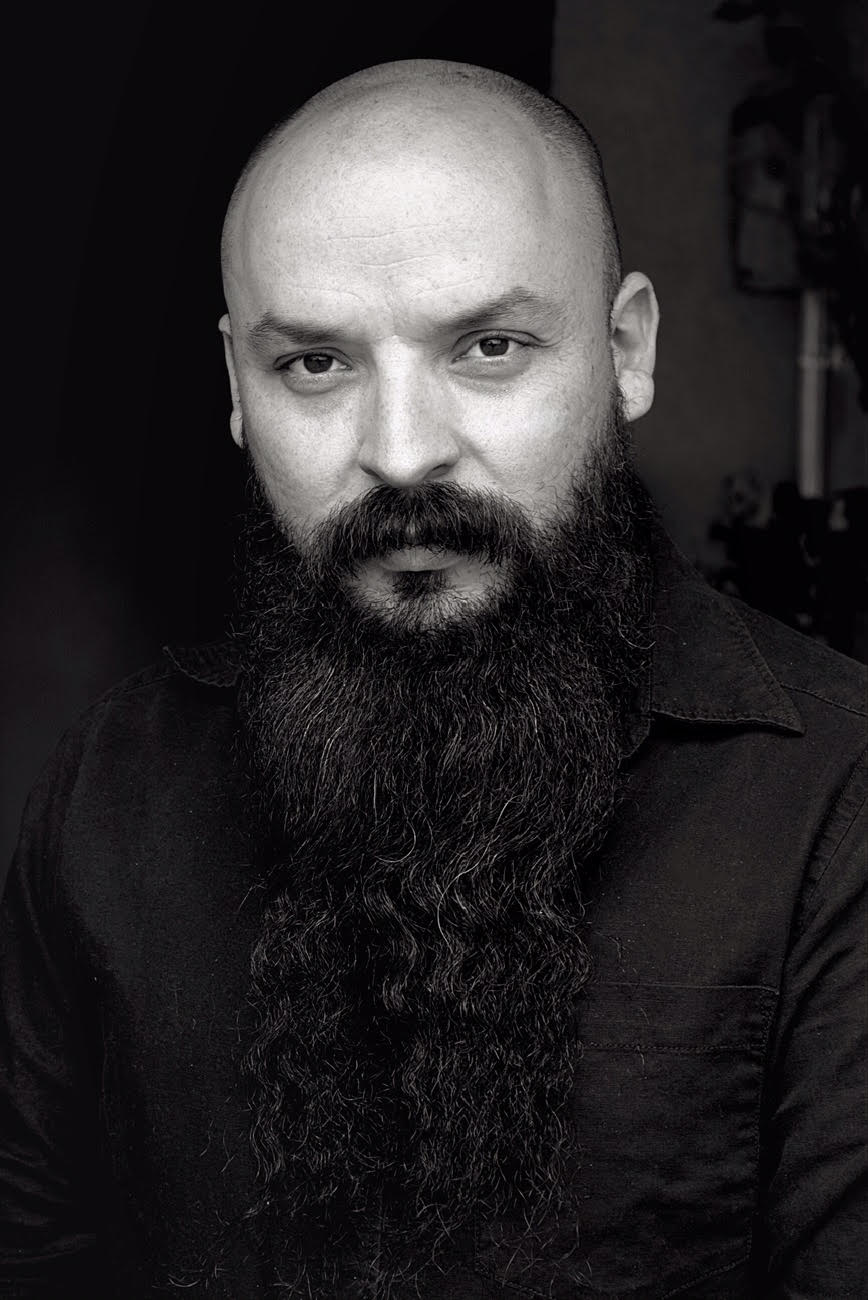
Interested in checking out more of Chris’s fiendish artwork? Follow him on Twitter, Instagram and Tumblr under @chrispandres! Also check out his Etsy store and his YouTube channel!







